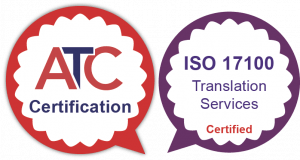
Marketing campaigns are one of the most important methods of raising awareness for your products or services and taking them to market. It’s likely that many hours have gone into the brief, copywriting and design side of a campaign, no matter the media, in order to ensure that the end result looks great and works well with your target audience.
When a campaign works well in its original country and language, people often look at the feasibility of replicating the success of the campaign elsewhere and translating it for another market. Putting aside the potential issues when translating directly rather than transcreating the material (essentially taking a campaign and reworking/adapting it for a different culture, rather than just rendering the words in another language), there are a number of things to consider when either you or your design team are putting your materials together for use abroad.
- Paper size
The US uses ‘letter’ and ‘legal’ sized paper, while the rest of the world generally uses the ‘A’ system (A0, 1, 2, 3, 4, etc.); if you will be offering your materials in another country, double check what sizes are available for printing and finishing. Stock availability differs between countries, so you may need to prepare a different-sized template to accommodate local convention – it’s the small things that count! Cardstock density/thickness measures can also differ between countries, so check with a good printer in your target area for what they are able to offer and would suggest for your project.
- Software of choice
In the past, many design agencies would use the much maligned Quark Xpress to produce marketing assets and other collateral (manuals, etc.). The use of such software would lead to issues when typesetting languages, especially those which have complex text layouts such as Arabic, Persian, Punjabi and many more. Luckily, support for these languages has improved over the past few years with later releases of Adobe’s Creative Suite or Creative Cloud. Not only is language support improved but, due to Adobe Creative Suite’s popularity and the interoperability of certain file formats (like IDML), it is often possible to work directly on the text in InDesign files using translation industry standard tools. - Text expansion
It may not even cross your mind that translated text in some cases may expand by up to 25%, as some languages just aren’t as succinct as English. One compound German word may be up to thirty characters long, and if columns are narrow, the word will need hyphenating and might not look great. Likewise, if your text frames are tight with the original English taking up all the available space, where will the translation go? Consider using fairly generous line spacing in English which can then be condensed for the translations to avoid having to re-size the frames or decrease the font size.
Linking text frames in programs such as InDesign can help to re-flow the text if it expands, rather than having to cut and paste content between areas on a page or spread. However, if a page is a standalone entity and the text in the original doesn’t necessarily flow mid-paragraph to the next page, keep it unlinked, as any text expansion can be dealt with on a page by page basis, rather than throwing the whole layout off.
Finally, check if any objects need to be wrapped around in a text frame. If the image or linked object isn’t set within a text frame, then long text won’t be able to wrap around it and so the text may become obscured. Use wrapping guides to ensure text flows correctly around complex objects, as line lengths will differ from language to language. - Layer it on
Naturally, you will want your marketing assets to ‘sing’, and so you will undoubtedly want to include images and graphics to get the right look. However, if those graphics contain text which will need to be localised (or localized), make sure you use and keep the original layered files. Once text is ‘burnt’ into an image, it can’t easily be changed or translated without rebuilding the whole image. If you are able to include layered files such as EPS or Illustrator files with the text editable inside, the costs for translating will be lower, and the result will be far better. Images and graphics
Please bear in mind that you may need to change the images and graphics in order to be able to produce a successful multilingual marketing campaign in another country. Some images and graphics will have a different connotation in another country, so you need to be very careful about this aspect.
These are only a few considerations you might wish to take into account when creating your marketing assets before they are translated. If you’d like any additional hints and tips on this, then please get in touch with us!
 The US uses ‘letter’ and ‘legal’ sized paper, while the rest of the world generally uses the ‘A’ system (A0, 1, 2, 3, 4, etc.); if you will be offering your materials in another country, double check what sizes are available for printing and finishing. Stock availability differs between countries, so you may need to prepare a different-sized template to accommodate local convention – it’s the small things that count! Cardstock density/thickness measures can also differ between countries, so check with a good printer in your target area for what they are able to offer and would suggest for your project.
The US uses ‘letter’ and ‘legal’ sized paper, while the rest of the world generally uses the ‘A’ system (A0, 1, 2, 3, 4, etc.); if you will be offering your materials in another country, double check what sizes are available for printing and finishing. Stock availability differs between countries, so you may need to prepare a different-sized template to accommodate local convention – it’s the small things that count! Cardstock density/thickness measures can also differ between countries, so check with a good printer in your target area for what they are able to offer and would suggest for your project. Images and graphics
Images and graphics